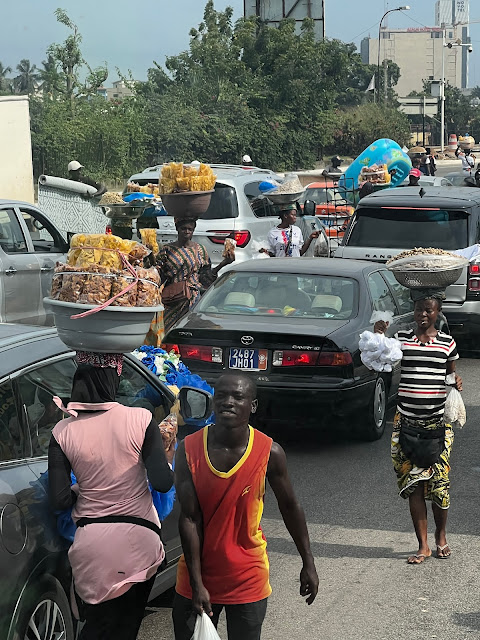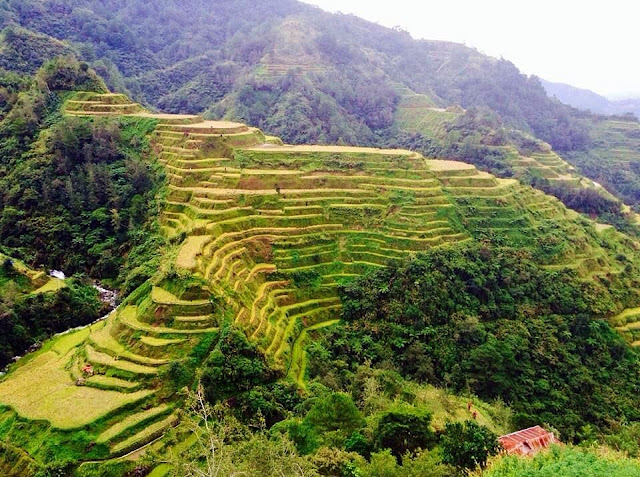West Africa Series: Côte d'Ivoire
Exploring the Contrasts of Cote D'Ivoire
My journey through Cote D’Ivoire offered a captivating blend of history, natural beauty, and the stark realities of daily life. The focal point of my adventure was the exhilarating hike through Banco National Park, but the city of Abidjan set the stage for a multifaceted exploration.
As I strolled through Abidjan, remnants of French colonialism echoed in the architecture and ambiance. The cityscape bore witness to a bygone era, preserving a unique cultural heritage. However, stepping outside the urban sprawl revealed a different narrative—one of pervasive poverty etched along the highways in weathered shacks. Questions about basic amenities lingered, and those doubts found answers after my hike at Banco National Park.
Largest Market in West Africa
Abidjan's districts, prefectures, and communes unfolded a tapestry of diversity. Adjame, boasting West Africa's largest marketplace, became a vivid microcosm of bustling commerce. Markets seemed to permeate every corner, from structured establishments to impromptu roadside stalls. Amidst halted traffic in Abidjan, the road transformed into a marketplace where women balanced a baby on their back and snacks and fruits on their heads while men carried an array of goods, from cabinets to mirrors, baskets to electronic devices.
The dichotomy between colonial echoes and vibrant markets encapsulates the essence of Cote D'Ivoire—a nation embracing its past while navigating the complexities of the present.
A Muddy Adventure
Embarking on a hike through Banco National Park in Abidjan, Cote d'Ivoire, promised an adventure, but little did I know that the previous night's rain would turn it into a memorable odyssey of muddy trails and unexpected discoveries.
As I set foot on the path, the aftermath of the rain revealed itself in the form of muddy puddles, turning what would have been a straightforward hike into a strategic dance around the wet terrain. Every step required careful consideration, veering to the sides of the trail to avoid the mud baths that lay in wait. The challenge added a thrilling element to the journey, making each muddy puddle a triumph to overcome.
The soundtrack of the forest came alive with the melodic symphony of birds and the rhythmic hum of cicadas. Butterflies gracefully danced between the trees, adding bursts of color to the lush greenery. Amidst this natural orchestra, the ranger shared insights into the flora. One botanical marvel that left an indelible mark on my senses was the "tomato danieli." As the ranger passionately described its unique qualities, the interpreter conveyed the essence of this fruit that promised a sensory experience like no other. With its exceptional sweetness, the taste lingered in my mouth for three delightful days, a testament to the richness of biodiversity within Banco National Park.
The journey through the forest also led me to the giants of the plant kingdom – the majestic mahogany trees. Standing tall and proud, these giants seemingly embraced in a natural union, earning the endearing nickname, the "kissing tree." It was a magical sight, a reminder of the interconnectedness of life within the heart of the park.
Navigating the muddy trails led to a surprise encounter—a small village nestled in the heart of the forest. Children played joyfully, their laughter echoing through the trees, while adults tending the snacks and refreshments stall. It was a testament to the resilience of communities living harmoniously within the park, adapting to and embracing the challenges of their unique environment.
The climax of the hike brought me to the museum, perched atop a hill, serving as the symbolic end to the tour. The museum showcased the history, flora, and fauna of Banco National Park, providing a comprehensive understanding of the ecological tapestry that makes this place so remarkable.
The bus ride out of the park was an unforgettable ride. Our bus jolted and bounced trying to avoid both the potholes on the rutted dirt-road and the overhanging branches from the canopies of trees. As we exited the park, I saw a bunch of clothes laid out on the grass. At first, I thought they were for sale. Our guide enlightened us, describing it as makeshift laundry. There was a communal space where the entire community gathered to wash their clothes. It somewhat answered my question about basic amenities like water in those shacks along the highways. It was a poignant reminder of resourcefulness amidst challengers.
Despite the muddy obstacles and unexpected village encounter, the hike through Banco National Park offered a unique perspective on the delicate balance between nature and human habitation. The melding of mud-soaked trails, vibrant wildlife, and cultural encounters painted a vivid portrait of the resilience and interconnectedness that defines this enchanting corner of Cote d'Ivoire.
PHOTO GALLERY
 |
| A study in contrast |
NOTE: All photos by the author










Comments
Post a Comment